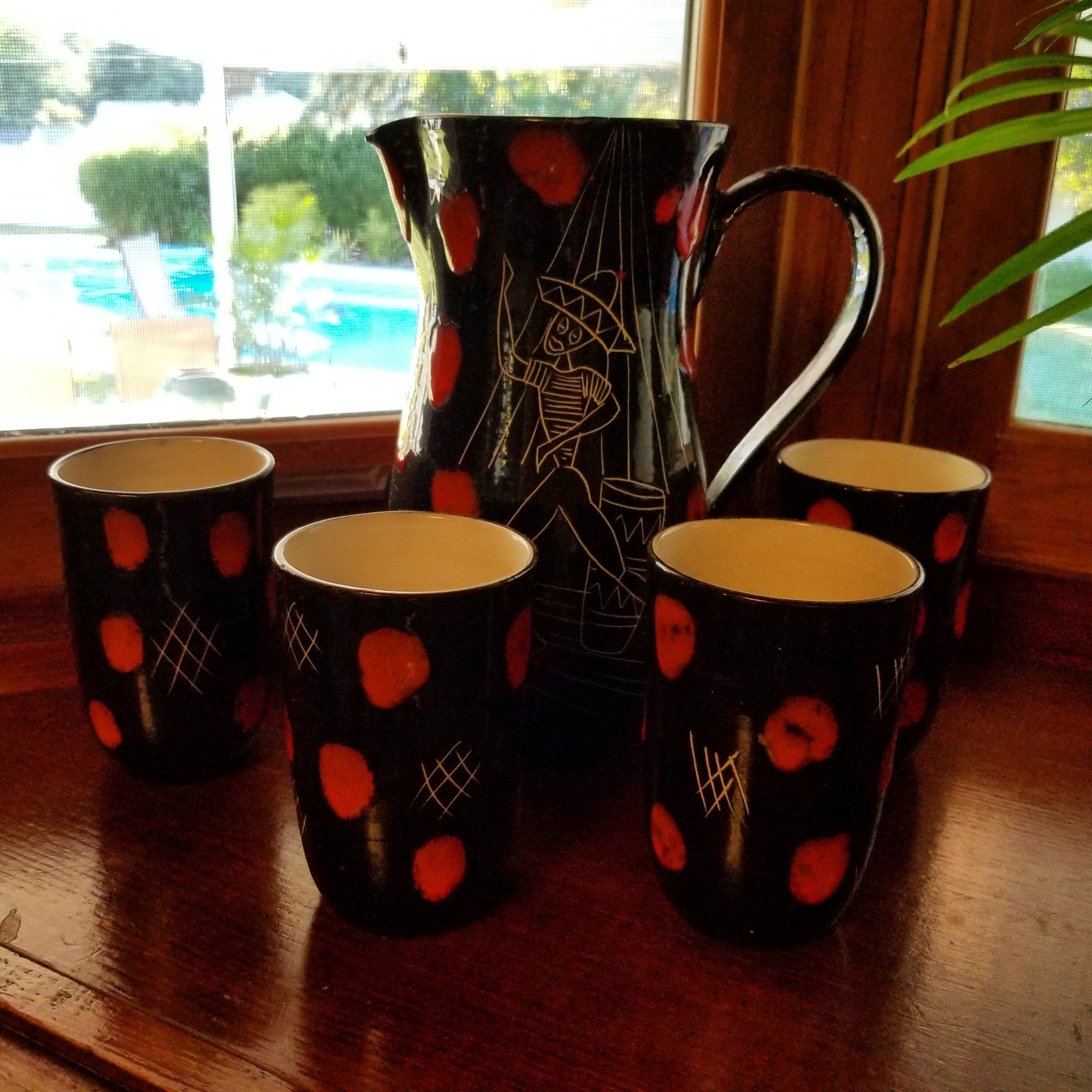Kiln to Kitchen: Mid-Century Italian Pottery & Women’s Lives in 1960s Italy
In a windowsill above my kitchen sink sits a funky, handcrafted ceramic pitcher set from the 1960s. It bears no makers’ mark, so I have little to go on regarding its history. My grandmother, Michelina (Mickey), purchased it while living in Ostuni, Italy in the early ‘60s while my grandfather, Michael (everyone called him Ed), was stationed at a US Air Force base, perhaps the nearby San Vito dei Normanni Air Station, northwest of Brindisi.
While it’s a striking piece of art and a fun conversation starter, my pitcher set is also a link to the lives of local Italian women during that era. It reflects the region's artisanal traditions and inspired me to learn about the cultural backdrop of Ostuni's female residents.
Artisanal Craftsmanship in Ostuni, Italy
During the 1960s, the town of Ostuni, which I’ve seen called both “The White City” or “La Città Bianca” as well as “The White Pearl” or “La Perla Bianca,” was known for its whitewashed houses. It was also renowned for a vibrant artisan community, with pottery and textile-making noted as significant local crafts.
The 1960s in Ostuni, like many other places around the world, were characterized by a mashup of old world tradition blending with (being confronted by?) mid-century modernity. Ostuni's economy was mainly agrarian, as was much of the rest of Italy, but it was supplemented by these artisanal crafts, and they attracted domestic as well as international attention.
While the famous artisans of the day were, of course, men, women seem to have played a quiet role too, working alongside family members in small workshops. I guess that, given the town’s legacy of pottery and art, it’s no coincidence that my grandmother returned from Ostuni with not just my pitcher set but also a second, very different, one that my mother owns.
The Cultural Landscape for Ladies
By the early 60s, Italy was decades out of its Mussolini-led fascist period of the 1920s and 1930s, during which women took up a pivotal role of resistance. The Italian Constitution and the granting of suffrage to women, both in 1946, marked a major turning point for women’s rights, and even opened the door for women to enter the workforce. However, in small towns like Ostuni, most Italian women held very traditional roles, managing the endless household responsibilities: cooking, cleaning and child-rearing.
When my grandmother was living there with my grandfather and two small children – my mother and her sister, born a year apart and both under six years old at the time; my uncle didn’t arrive on the scene until a few years later – Italy had just begun to enter its feminist movement.
In 1963, right around the time my family was leaving Italy to return to the US, Italian women were granted access to public employment. It wasn’t until 1968 that adultery by a woman was decriminalized (I’m assuming that men had it easier…pretty much always), and the abolishment of honor killings and shotgun marriages took all the way until 1981. That’s kind of terrifying. Laws against stalking (2009) and sexual violence (2013) came far later.
Looking Back
My grandmother always talked about her years in Italy (roughly 1960-1963) with a misty-eyed fondness. She was a young bride and mother, a cosmopolitan Manhattan-bred woman living in a rural village in a foreign country, and I’m sure it was exciting. She made lifelong friends among her female neighbors in Ostuni. As I write this, I hope that those Italian women’s lives were as happy as my Italian-American grandmother’s was.
Over time, Ostuni’s unique whitewashed architecture and rich artistic heritage began drawing international tourists, which provided local artisans, including the women, new opportunities to sell their wares. This burgeoning tourism and the growing movement towards social equality may have allowed local Italian women to realize a sense of financial independence and assert greater influence within their own households and their community.
I certainly hope so. At the very least, for Mickey’s friends.
Want to learn more about how my grandparents have contributed to my collection of feminist historical items? Check out “My Vintage Telefunken: A Family Heirloom Likely Made by Women.”

